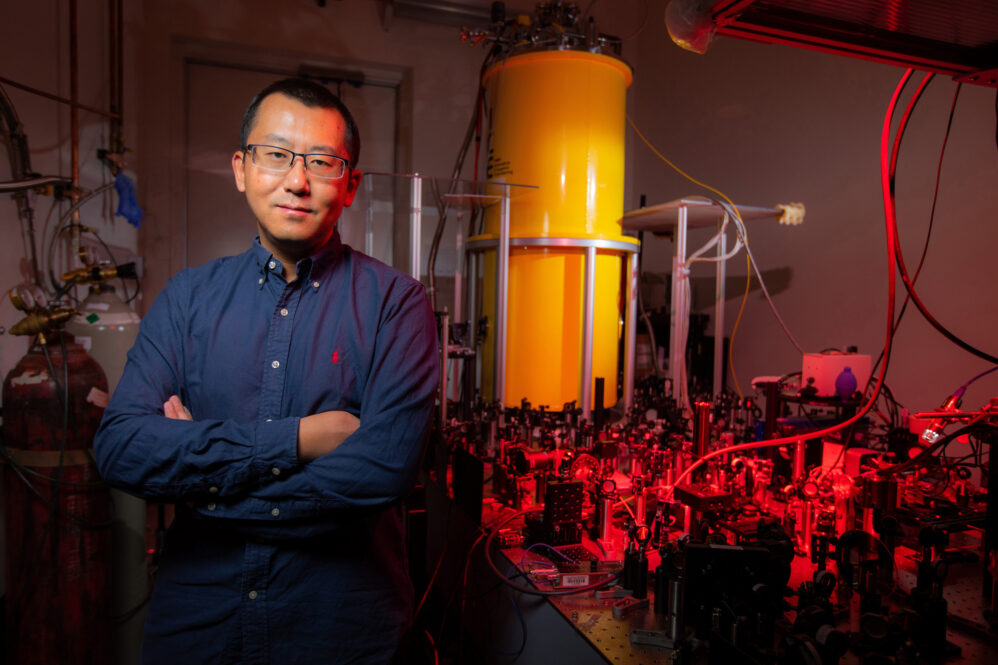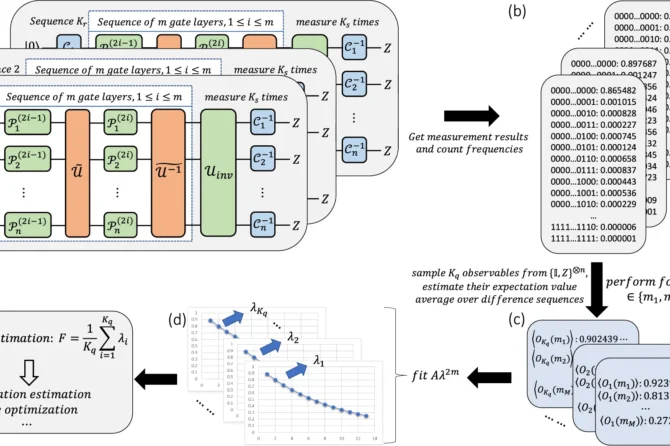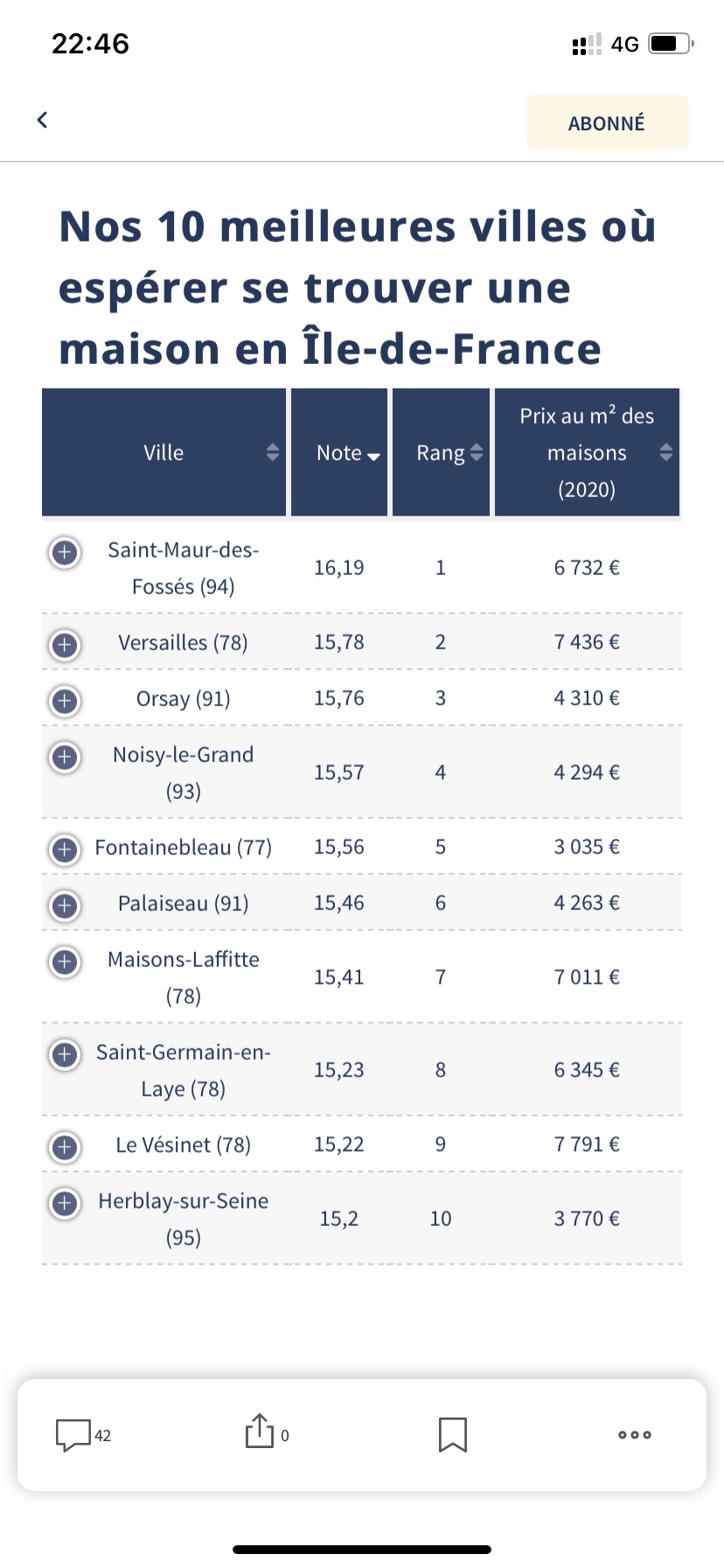Wang, an Iowa State University professor of physics and astronomy who’s also affiliated with the U.S. Department of Energy’s Ames National Laboratory, described how the instrument works in extreme scales of space, time and energy — billionths of a meter, quadrillionths of a second and trillions of electromagnetic waves per second.
Wang pointed out and explained the control systems, the laser source, the maze of mirrors that make an optical path for light pulsing at trillions of cycles per second, the superconducting magnet that surrounds the sample space, the custom-made atomic force microscope, the bright yellow cryostat that lowers sample temperatures down to the temperature of liquid helium, about -450 degrees Fahrenheit.
Wang calls the instrument a Cryogenic Magneto-Terahertz Scanning Near-field Optical Microscope. (That’s cm-SNOM for short.) It’s based at the Ames National Laboratory’s Sensitive Instrument Facility just northwest of Iowa State‘s campus.
It took five years and $2 million — $1.3 million from the W.M. Keck Foundation of Los Angeles and $700,000 from Iowa State and Ames National Laboratory — to build the instrument. It has been gathering data and contributing to experiments for less than a year.
Reference : L. Luo, M. Mootz, J. H. Kang, C. Huang, K. Eom, J. W. Lee, C. Vaswani, Y. G. Collantes, E. E. Hellstrom, I. E. Perakis, C. B. Eom, J. Wang. Quantum coherence tomography of light-controlled superconductivity. Nature Physics, 2022; DOI: 10.1038/s41567-022-01827-1




